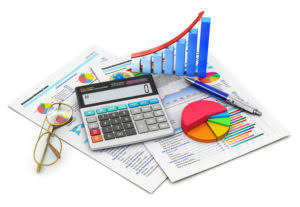Posted on April 14, 2020
Content
Therefore, since interest on debt is tax-deductible, it makes mortgage a cheaper finance option. If an individual or a business has medical expenses more than the standard deduction, can choose to itemize and then the excess or rest over amount is tax-deductible. An alternative approach called adjusted present value discounts interest tax shield separately. Even though the APV method is a bit complex, it is more flexible because it allows us to factor-in the risk inherent in admissibility of interest tax shield. Therefore, the company can achieve a tax shield of $20,000 by leveraging its depreciation expenses. As you can see, with this formula, you can calculate how much you can shield yourself from taxes by leveraging your depreciation expenses.
Pricing will vary based on various factors, including, but not limited to, the customer’s location, package chosen, added features and equipment, the purchaser’s credit score, etc. For the most accurate information, please ask your customer service representative. Clarify all https://www.bookstime.com/ fees and contract details before signing a contract or finalizing your purchase. Each individual’s unique needs should be considered when deciding on chosen products. In most cases, taking on a debt provides incentive to taxpayers, especially the middle-income earners.
Are There Other Tax Shields?
The taxes saved due to the Interest Expense deductions are the Interest Tax Shield. Below is a simple example of the impact of Interest on taxes paid. With the two methods clarified, let’s look at the Cash Flow impact of each approach.
However, we can identify the total present value of interest tax shield as the difference between net present value calculated at pre-tax WACC and net present value calculated at after-tax WACC . Depending on the circumstances, the amount of the deductible can go as high as 60% of the adjusted gross income of the taxpayer. Another example of a tax shield used as an incentive is a student loan and works the same as a home mortgage. A home mortgage can be used as a tax shield for those who are existing homeowners, as well as those who are interested in purchasing a property because of the tax benefit that it provides. The term Tax Shield is derived from the ability of the deductions to shield the taxpayer’s income from taxation.
Definition Of Tax Shield
Helping private company owners and entrepreneurs sell their businesses on the right terms, at the right time and for maximum value. Realized1031.com is a website operated by Realized Technologies, LLC, a wholly owned subsidiary of Realized Holdings, Inc. (“Realized”). Equity securities offered on this website are offered exclusively through Thornhill Securities, Inc., a registered broker/dealer and member of FINRA/SIPC(“Thornhill”).
Accounting students can take help from Video lectures, handouts, helping materials, assignments solution, On-line Quizzes, GDB, Past Papers, books and Solved problems. Also learn latest Accounting & management software technology with tips and tricks. See different types of capital budgeting techniques, such as payback period and internal rate of return. Companies also consider it while deciding an optimal capital structure. Referring to a mix of debt and equity funds used for the operations by the company is capital structure.
How Does The New Tax Law Affect Tax Shields?
The tax shield reduces the company’s tax bill, which in turn lowers its costs and increases its profits. The tax shield is an important benefit for companies because it allows them to keep more of their profits, which can be used to finance new investments or pay dividends to shareholders. Depreciation refers to the reduction in the value of tangible assets over some time due to wear and tear. However, depreciation can be used as a tax shield approach by decreasing the depreciation expense from taxable obligation.
Depreciation is added back because it is a non-cash expense and we need to work with after-tax cash flows . The second expression in the second equation (CI – CO – D) × t calculates depreciation tax shield separately and subtracts it from pre-tax net cash flows (CI – CO).
Breaking Down Tax Shield
Taxpayers won’t be able to take advantage of these tax shields until they reach a level of deductions over the standard amount. Read more about the Trump Tax Plan and how it affects deductions. They can use this to the advantage of the company since interest is a tax-deductible expense. There it becomes another important and common tax shield approach for the firms. For example, if an individual has $2000 as mortgage interest with a tax rate of 10%, then the tax shield approach will be worth $ 200. Companies try to maximise their expense for depreciation to incorporate the tax filings.
A depreciation tax shield is the amount of tax saved due to depreciation expense which is calculated as depreciation debited as expenses multiplied by the applicable tax rate to the entity. The depreciation is allowable to the business entity for the assets used for business and on personal assets no depreciation is allowed as expenses.
Study the definition and process of capital budgeting, how it is used, and how the cash flows. Another big change is that the standard deduction on personal tax returns has been doubled, decreasing the value of some tax shields, like mortgage interest and charitable giving.
Finance Your Business
Tax payments can be better managed with the Depreciation Tax Shield. A tax shield is a reduction in taxable income by taking allowable deductions.
- The tax shield is the method of reducing the taxable liability by applying the deductions allowed by the government.
- Calculate the depreciation tax shield and the net operating profit.
- Analyze how cash flows directly inform business project decisions by considering types of cash flows, costs, and stand-alone principles.
- By accumulating expenses that are valid tax deductions, business owners can reduce their taxable income.
- You also claim depreciation in your bookkeeping, but it may give you a different result than your depreciation tax shield.
- Allocating all of the depreciation expense to the final year of the asset’s life.
- The Life of Solar Power Plant is considered as 25 Years, but in this example, we have considered the time period for 4 years only.
What’s interesting here is that the $20,000 yearly expense that is allocated to the asset is a non-cash expense (the company did not have to disburse $20,000 for that asset every year). Joshua Wiesenfeld is a financial investigator, certified public accountant , and certified fraud examiner with almost a decade of experience. He writes about taxes and investing and has been published in the Journal of Accountancy and Fraud Magazine.
TAX BenefitsTax benefits refer to the credit that a business receives on its tax liability for complying with a norm proposed by the government. This guide and overview of investment methods outlines they main ways investors try to make money and manage risk in capital markets. ‘Straight line’ or ‘prime cost’ depreciation, which allocates equal depreciation expenses over each year of the asset’s life. Operating leverage is a percentage of the fixed costs a business incurs and is used to determine the number of goods that must be sold to break even, and also profit levels from individual sales. Learn about the definition of operating leverage, and practice using the formula for calculating it with real-world examples. For example, a business is deciding whether to lease a building or to buy the building. Taking on a mortgage for the purchase of a building would create a tax shield because mortgage interest is deductible to a business.
For this reason, the depreciation tax shield is quite advantageous as you are using a non-cash expense to reduce your overall taxes payable. Let’s look at the example of an owner of a fleet of trucks whose equipment depreciated over the tax year. Depreciation is a deductible expense, and a portion of the depreciated amount can therefore lessen the owner’s overall tax burden.
Depreciation Tax Shield Formula
The type of tax shield depends on the individual, business, and country they are living in. People that use their home mortgage as a tax shield seek to benefit, as these are mostly people who are middle-class citizens whose homes are a major component of their overall net worth.
The cost of debt is the return that a company provides to its debtholders and creditors. Cost of debt is used in WACC calculations for valuation analysis.
The value of the tax write-off on depreciation of plant and equipment. Our systems have detected unusual traffic activity from your network. Please complete this reCAPTCHA to demonstrate that it’s you making the requests and not a robot. If you are having trouble seeing or completing this challenge, this page may help.



